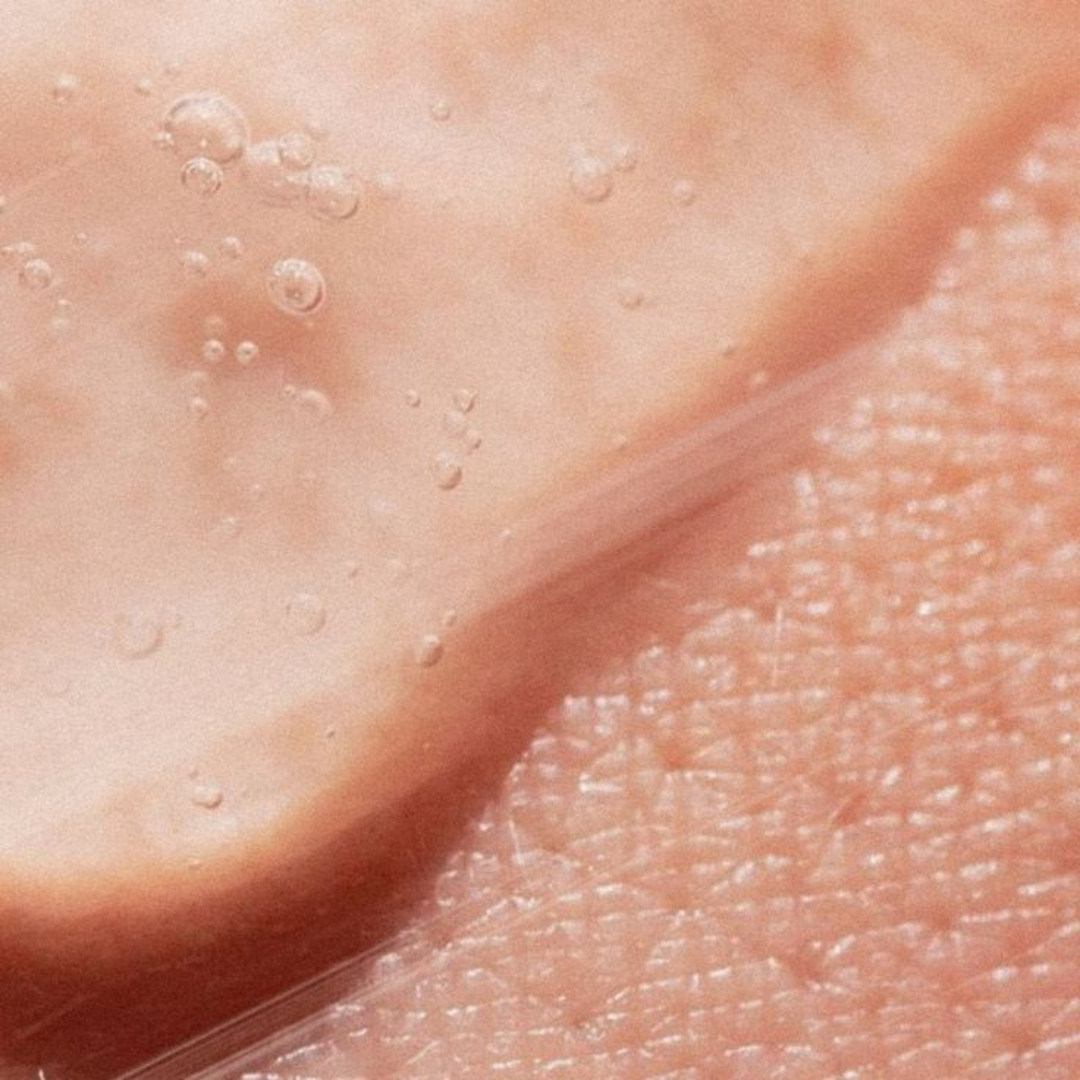
What makes skin feel grainy?
Share
Smooth, soft skin is often desirable, but sometimes a grainy or rough appearance is noticed. This grainy sensation can affect skin texture and be the result of various factors, such as skincare habits or certain skin imbalances. Understanding the causes of this grainy appearance is essential to adopting an effective skincare routine and regaining smooth, even skin.
What causes granular skin?
Thegranular or roughappearance of the skin can result from several internal and external factors, which vary according to skin type. Here are the main causes:
1. Accumulation of dead cells
One of the most common reasons for rough skin is the accumulation of dead cells on the skin's surface. When these cells are not removed properly, they clog the skin's pores and give it an uneven feel.
2. Excess sebum
In people with oily skin, the sebaceous glands produce excess sebum. This can accumulate in the pores, leading to pimples and blemishes, and accentuating the uneven texture of the skin.
3. Dry skin
Skin dryness is another common cause. When skin lacks moisture, it becomes rough and loses its suppleness. Showers that are too hot, for example, can exacerbate this problem by destroying the skin's natural lipid barrier.
4. Keratosis pilaris
This condition is characterized by the appearance of small bumps, often on the arms or thighs. It is caused by an excess of keratin that clogs the hair follicles, giving a rough, grainy appearance.
5. Excessive use of chemicals
Certain skincare products containing aggressive ingredients can irritate the skin and alter its texture, especially if they are not adapted to your skin type.
6. Environmental factors
External aggressors such as pollution, UV rays or extreme temperatures dry out the skin, making it more fragile and amplifying its irregularity.

How do I get smooth skin?
Fortunately, a number of solutions exist to improve thegrainy appearance of skin. A well-thought-out skincare routine and products adapted to your needs are essential to restore smooth, soft skin.
1. Exfoliate regularly
Exfoliation helps remove the dead cells responsible forroughness. Choose gentle exfoliants that are adapted to your skin, to avoid irritation.
2. Adopt a good skincare routine
Incorporate an anti-blemish cream to target small pimples and smooth skin texture. For dry skin, opt for moisturizers rich in soothing ingredients.
3. Avoid hot showers
Excessive heat can strip skin of its natural oils, resulting in dryness and a rough texture. Opt for lukewarm water and use a mild cleanser.
4. Daily moisturizing
Moisturizing is crucial to improving the appearance of your skin, whatever your skin type. A good moisturizing cream helps maintain a healthy skin barrier and smooth the skin's surface.
5. Dealing with specific problems
For keratosis pilaris, use creams containing exfoliating acids such as lactic or glycolic acid. These ingredients help unclog pores and reduce roughness.
6. Regulate sebum production
For oily skin, products containing zinc or niacinamide can help controlexcess sebum while improving skin texture.
Mistakes to avoid
- Use harsh chemicals: These can irritate the skin and aggravate thegranular appearance. Choose products formulated for sensitive skin.
- Neglecting moisturization: Even oily skin needs moisturizing care.
- Forgetting sun protection: UV rays can damage the skin and accentuate irregularities.
Conclusion
Thegranular appearance of skin can be caused by a variety of factors, fromexcess sebum to dry skin or specific conditions such as keratosis pilaris. To remedy this, it's essential to adopt an appropriate skincare routine and choose products that respect your skin type. With a few simple, consistent gestures, it's perfectly possible to regain smooth skin and improve the overall texture of your epidermis.

